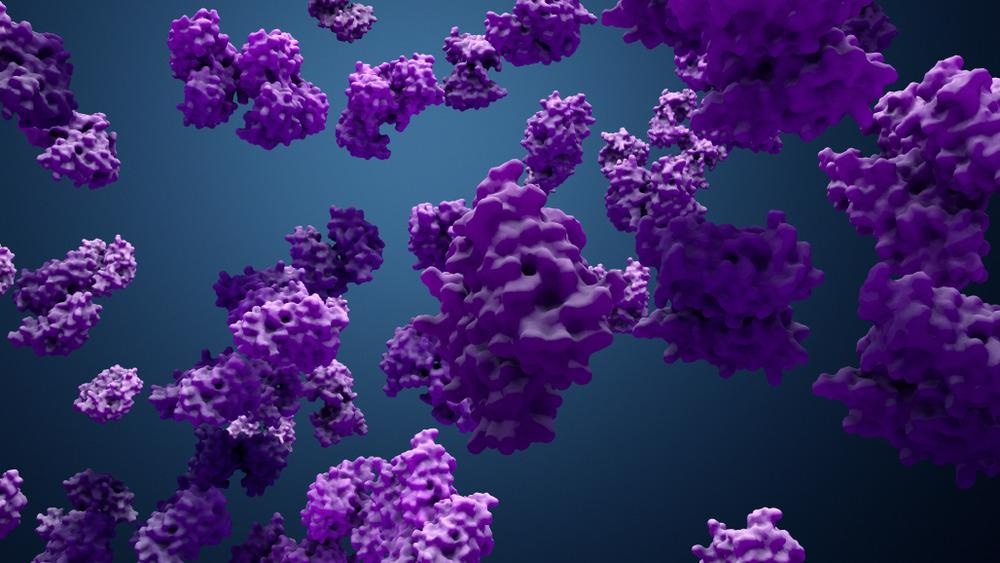AZoM speaks to Dr. Spence Macdonald from ABOzymes about his discovery of a novel biopolymer, acholetin, synthesized from a bacterial enzyme.
Please can you introduce yourself and your professional background?
I studied as a biochemist in the laboratory of Stephen Withers at the University of British Columbia. Throughout graduate school, my research focused largely on discovering new enzymes that can be used to synthesize carbohydrate-based materials from inexpensive starting materials. A component of this research involved developing high-throughput methods that could identify a desired enzyme activity from large DNA libraries derived from diverse biological samples.
This work led to the discovery of a handful of new enzymes, and to our surprise, a previously unknown carbohydrate-based biopolymer, which I named acholetin!
I have since completed my Ph.D. and have gone on to start a company (ABOzymes) with my former Ph.D. supervisor and colleagues based on enzyme technology discovered in the lab that is able to convert the carbohydrate-based ABO blood group antigens to the universal donor type. In a sense, I’m now working towards making blood types obsolete.
What are biopolymers and how are they generally formed?
Simply put, biopolymers are polymers that are biological in origin, and polymers themselves are substances that consist of many repeating subunits, called monomers. Generally, biopolymer synthesis is performed by highly specific enzymes within or at the surface of cells. The most common biopolymer with which people are most likely familiar is DNA, which is a macromolecule consisting of repeating units of nucleic acids.
Proteins are another common example, composed of repeating amino acids, but given my research background, I am most familiar with carbohydrate-based biopolymers (polysaccharides), such as cellulose and chitin, which represent the most and second most abundant biopolymers on earth, respectively.
What is the role of enzymes in polysaccharide and biopolymer synthesis?
Enzymes are the biological entities that carry out the process of polysaccharide and biopolymer synthesis. Or more precisely, in the case of polysaccharides, enzymes catalyze the formation of the glycosidic linkage, or the covalent chemical bond that connects monomeric subunits together thereby forming a chain structure.
The relatively large diversity of carbohydrate monomeric precursors and the array of possible linkages means that polysaccharides can adopt a much wider range of structures and functions compared to their nucleic and amino acid counterparts. However, along with their versatility comes added complexity resulting in a much wider set of enzymes that act on carbohydrates, each one specific toward a strict linkage and substrate combination.
Thankfully, for those of us that study these enzymes a classification system was devised, known as the Carbohydrate Active Enzyme Database (CAZy), which describes families of enzymes that degrade, modify or create glycosidic bonds. There seems to be a constant stream of new CAZy members and even whole new families being added to the database…there’s still a ton out there to be discovered.
What led you to test the enzymes of the bacteria Acholeplasma laidlawii?
We discovered the new enzyme, acholetin phosphorylase (or AchP for short), as part of a larger study that aimed to characterize a synthetic gene library of over one hundred enzymes that spanned five families within the Carbohydrate Active Enzyme Database. In choosing the enzymes for the library, our primary goal was to select a representative set that maximized functional diversity, so we were somewhat agnostic to the organisms from which the gene originated. It just so happens the AchP gene from Acholeplasma laidlawii was selected when constructing the library. I wasn’t aware we were studying an A. laidlawii enzyme until after we developed its activity profile.

Image Credit: Design_Cells/Shutterstock.com
Could you describe the process through which you discovered that you had synthesized a new polysaccharide?
When we first received the synthetic gene library, we knew very little about the function of the enzymes represented within it, which were all glycoside phosphorylases by the way. To learn more, we screened the library against a diverse set of monomeric precursors then looked to see which enzymes were able of catalyzing the formation of glycosidic bonds with which precursors.
After viewing the results, we quickly focused in on the candidate we would later identify as AchP because it was catalyzing the formation of chains of the sugar N-acetylglucosamine (GlcNAc). We initially hoped we had discovered the elusive glycoside phosphorylase that acted on chitin. Chitin is a linear polysaccharide composed of GlcNAc subunits linked together through a type of glycosidic bond known as beta-1,4. Structural analysis of AchP’s product revealed that the GlcNAc subunits were linked through beta-1,3 bonds, not beta-1,4. It took us a moment to recognize that a polysaccharide consisting of beta-1,3 linked GlcNAc had yet to be described in the scientific literature and that we had discovered a new biopolymer.
What is unique about this polysaccharide and its properties?
What is unique is acholetin’s chemical structure. GlcNAc is able to form beta-linked homopolymers through beta-1,6, beta-1,4 and beta-1,3 glycosidic bonds. Beta-1,2 and beta-1,5 linkages are not chemically possible for GlcNAc, and beta-1,1 linked GlcNAc is unable to form polymers. Beta-1,4 and beta-1,6 linked GlcNAc polymers are well known as chitin and PNAG, the latter being a key virulence factor for biofilm formation.
. I guess you could say that beta-1,3 linkage containing acholetin represents the missing linkage?
Interestingly the other common sugar, glucose, exists in polymeric forms in beta-1,6 (beta glucan), 1,4 (cellulose) and 1,3 (beta-1,3 glucan) and each of these is common…so the 1,3 GlcNAc polymer really was the one missing.
It is too soon to comment on the physical properties of acholetin, as we have not yet studied them under controlled conditions.
What are some of the applications this biopolymer may be used for?
It is too soon to know for sure. We can only speculate at the moment. However, we can look to the wide variety of applications in which other polysaccharides are used to get an idea of acholetin’s potential. These include components of drug delivery systems, therapeutics, wound dressings, scaffolds for tissue engineering, 3D bioprinting, or biodegradable plastic alternatives, to name a few.
Once acholetin’s physical properties are established in the lab we should have a clearer idea of its potential.
Is the production of this biopolymer scalable?
In principle yes, it is scalable. I devised a two-step enzymatic synthesis method that yielded about 350 mg of acholetin from 1 g of GlcNAc. The first step utilizes a kinase enzyme which transfers a phosphate group from ATP to GlcNAc to produce GlcNAc 1-phosphate. The second step sees AchP synthesizing acholetin using the GlcNAc 1-phosphate produced in the previous step. The enzymatic reaction mixture is then desalted to produce the pure acholetin.
Are there any limitations you are yet to overcome in regard to the synthesis and application of this polymer?
The current limitation, which relates to scalability, is the high cost of the ATP starting material. It is cost-prohibitive if acholetin were to be produced on an industrial scale. However, if there were a cheaper way to produce GlcNAc 1-phosphate, industrial scaling would indeed be possible. This brings us back to that elusive glycoside phosphorylase that acts on chitin, which we were looking for when we began this research.
Such an enzyme would be ideal because using this enzyme it would be possible to produce an ample supply of GlcNAc 1-phosphate from inexpensive starting materials: chitin and phosphate. I think this enzyme is out there in nature, we just need to find it.
With an ongoing plastic pollution crisis, how important do you believe biopolymers will be to a sustainable future?
Plastic alternatives made from biodegradable biopolymers could be a game-changer in terms of minimizing environmental damage from our waste products. When these plastic alternatives end up in the landfill or ocean they would end up being eaten by some hungry microbes, as opposed to persisting for centuries in our environment.
Was there any part of this research that was especially surprising or interesting to you?
We set out to find new enzymes by testing their activities against a set of known substrates. Not only did we find a new enzyme, but we also found a new polysaccharide substrate…that doesn’t happen every day. It was certainly a surprise.
What are the next steps for your research?
We would like to analyze the material properties of acholetin, explore potential applications of acholetin, understand the biological role of AchP and acholetin, and find that elusive chitin phosphorylase.
Where can readers find more information?
Link to the paper: https://pubs.acs.org/doi/10.1021/acscentsci.1c01570
Linkedin: https://www.linkedin.com/in/spencer-macdonald
Twitter: https://twitter.com/spencemacdon
Twitter: https://twitter.com/withlabb
About Dr. Spence Macdonald
 Dr. Spence Macdonald studied high-throughput enzyme discovery in Stephen Withers’ lab at the University of British Columbia. During his Ph.D. Spence focused on developing translational research to solve real world problems, which lead him to co-found ABOzymes Biomedical.
Dr. Spence Macdonald studied high-throughput enzyme discovery in Stephen Withers’ lab at the University of British Columbia. During his Ph.D. Spence focused on developing translational research to solve real world problems, which lead him to co-found ABOzymes Biomedical.
Website: abozymes.com
Disclaimer: The views expressed here are those of the interviewee and do not necessarily represent the views of AZoM.com Limited (T/A) AZoNetwork, the owner and operator of this website. This disclaimer forms part of the Terms and Conditions of use of this website.